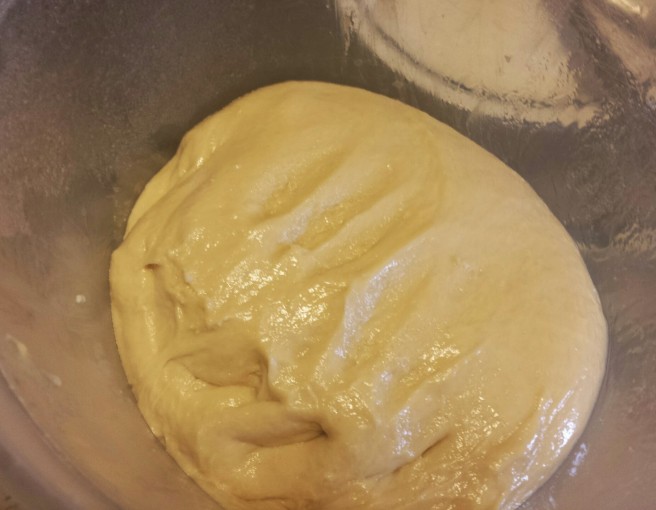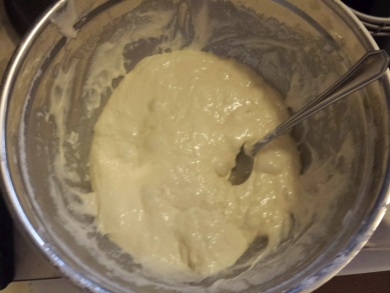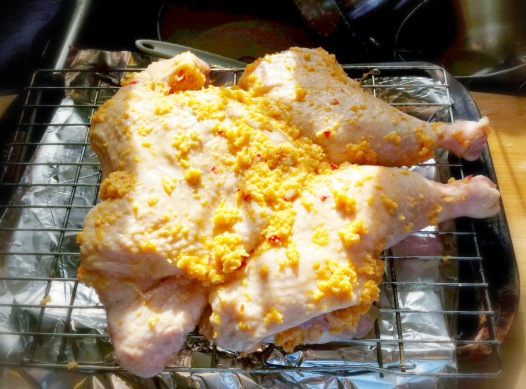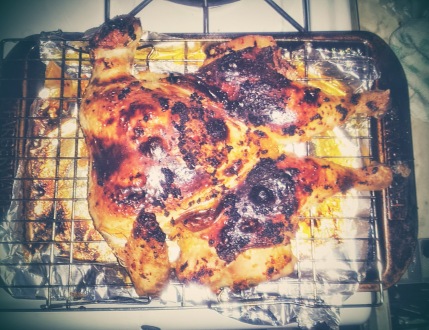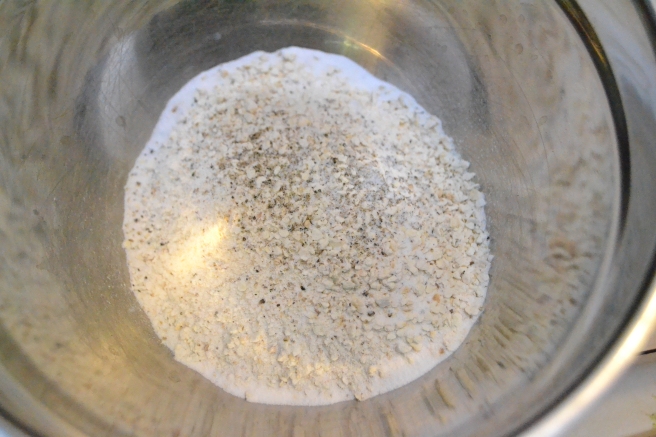Ok nerdlings, I know you’ve been wondering what that emptiness you’ve been feeling lately is, and I think I have it figured out…it’s me, duh…I know i’ve been major awol lately (a grand total of 2 posts in all of 2015!), but to be honest with you…

..so let’s get back into this whole thing, mmmkay? Great..
ok…so where do we start? how about an ice breaker post, like on something we can all admit we love…

(secretly I’ve been spending the whole year searching for the appropiate gifs to attach, and I think it’s obvious that I..
 …)
…)
– hey nossi! way to still be weird!! we barely even noticed you were gone!!
aww, you guys

ok, i’m done…moving right along
So as I’m sure you remember we’ve already covered coffee … twice…but to recap for the sake of, whatever the opposite of brevity is, the coffee that we’ve all come to love is a “bean” that’s more like the seed found in a cherry-like fruit. The bean is then dried, fermented, roasted, ground, and brewed. There are so many variables that can affect the final product, that it can get confusing, so let’s go over the stuff that actually you have control over.
1) The beans – As with any food, quality deteriorates over time, and obviously the fresher and better the bean, the better the coffee (there’s actually a caveat to that statement…coffee beans are actually not at it’s best right after it’s roasted, and that’s because after roasting there’s a lot of gases [carbon dioxide being the most abundant] that still needs time to dissipate out, and if brewed right away can give an off flavor..)… So its always best to buy whole beans, and grind yourself (more on that in a second).
What kind of bean you get, I feel like, is where it can get mostly unnecessarily confusing. Roast of said bean aside, (which we’ll also get to shortly, Dr Impatientpants, geez…), there’s the actual type of bean. For example kona bean or blue mountain, or Ethiopian yagachurra are all names of famous beans known for distinct qualities (ok, I made up that last one), and sure they might be great and all, but I’m inclined to opine that the subtle nuances that differentiate between one bean and the next are of lesser importance than freshness, roast, and brew method. That’s not to say they’re not important, but it’s not the most important thing to look for. Also a lot of times they sell these high quality beans as part of a “blend,” and there’s no way to tell what percentage is high quality bean, and what is some other random bean. That’s not to say all blends are bad, but make sure it’s from a reputable roaster.
2) The roast – in order to get the dark color which is characteristic of coffee, can we please have Monsieur Maillard come back from his long hiatus? Don’t know what/who I’m talking about? Well its time you open your eyes bruhhh, and maybe read like one other post on this here fine establishment.. (Maillard = browning {which is not the same as caramelization}..which we’re not going to get into here..)…but how long you roast it will make a difference for coffee beans. To keep this brief – light roasts are obviously roasted the least amount of time, and will allow you to taste more of the coffee notes that are unique to the individual bean. Dark roasts (also known as Italian/french/vienna/espresso roasts) are as dark and shiny as they come, and will have mainly roasted-y flavor, and very little flavor of the character of the coffee, and are great for espressos. Medium roasts try to toe the line between the two.
The roast type you want is mainly whatever your preference is. Personally I used to love medium roasts, because I’ve felt that light roasts didn’t give me enough in the way of oomph/flavor, and dark roasts were too much. But nowadays I lean towards lighter roasts (partly because of the newer way I’ve been brewing, namely an aeropress, which if moshiach doesn’t come before I’m done this “short” diatribe, I might get around to talking about!).
3) the grind – there’s two ways of grinding your beans, the wrong way and the right way. The wrong way is to put it in a “spice grinder,” which similar to a food processor has a whirring blade on the bottom of some sort of bowl, and chops up the coffee bean into random sized chunks. The issue with this method is the non-uniformity in the grind size, which since we’re doing some sort of extraction of flavor, the variables that effect that are mainly: time, temperature, and surface area. The surface area of the coffee is dependent on the size of the grind, and if when grinding the coffee the beans are not uniform in size, then some beans will be under-brewed, and some over-brewed. However, if you were to use a burr grinder, which is essentially two inverted cones on top of each other, it dictates exactly how large the grind size will be. Which brings us to the last point –
4) the brew method – as Harold McGee says in On Food and Cookin there’s no one way that will brew the perfect cup of coffee. Each different method has it’s pros and cons taking into account different variables. Like for example – a French press allows you to take advantage of the amount of brew time, and obviously the temperature, but grind size is a little tricky. A pour over (like a Chemex) can help with the grind size problem, but time will be harder to control.
Then there’s the Aeropress. The aeropress is basically a combination of a pour over and a French press, and it kinda looks like a very large syringe with a filter attached to it’s end. The nice thing that I’ve found is it allows you to control all of the things we’ve talked about. There are really two ways of brewing with an aeropress, the regular way, and the upside down way. Here’s a step-by-step rundown on how I do things in my backwards world.
I like to start my aeropress upside down, with the plunger on the bottom. I add my coffee (obviously i weigh my coffee and weigh my water…there’s absolutely no other way of having consistently good coffee every day without doing that, and I’ll range from a 15:1 water:coffee ratio [for lighter roasts] all the way up to a 22:1 [for medium roasts). 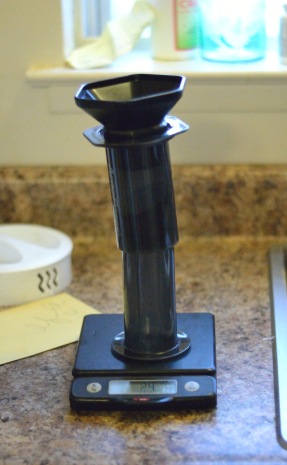
The next step is what’s called blooming the coffee ground, and that simply means adding enough hot water to just moisten the grind by adding about double the amount of water than grind (so in our example, 48 grams), and letting it sit for about 30 seconds. This starts to pull out the remaining trapped gasses in the beans.

Once that’s done, fill the rest of the aeropress with water*, and let it seep. I usually seep the grind for around 4 minutes (but again, since time is one of the determining factors, upping or downing [??] the amount of time will affect the end results).
*can we pause for a second and talk about water temperature?? So you know how temperature is one of the factors that affect the overall extraction? Well coffee needs to be brewed no more than 190-200 degrees because it will extract too many harsh flavors; Water boils at 212 degrees, so basically water that’s just boiled is not what you want. What I do is boil water and let is sit for about 15 minutes, or if I’m in a hurry, I take a page out of Sh’miras Shabbos K’Hilchasa, and use a k’li sheni [ie – I pour the really hot water into another cup, wait about a minute, and use that water]. Along those lines, we’ve done cold brewed coffee [which again, lower temperature, means longer brew time], and I’ve even attempted “warm brewed coffee” where I brew the coffee in a sous vide machine at about 100 for a few hours…the coffee was similar to cold brewed, with a little more oomph….

Then, I’ll put the paper filter on the filter doo-hickey, and screw it on; Turn it right side up, and press the plunger down, gently…it should take about 1-2 minutes to express all that beautiful brown elixir.

Once that’s done, then you top off the brew with hot water to come to your total. So in our example, we have 24 grams of coffee grind, if we’re going to go with a 15:1 ratio, we’re going to need 360 grams of water, but the aeropress can only hold about 250 grams of water, so I add the additional water after (in this example, the additional 90 grams). Now you might be thinking, but won’t that dilute the coffee down? The answer my friend is, no. So for once in your life, just please trust me.

Now you can brew it the normal way, where you put the filter on first, put the coffee grind, pour your water, and then attach the plunger and push the brew out (and top of with water)

So yeah, that’s what I’ve been up to, pretty boring right? Sooo…yeah, this was fun…maybe, um, we can do this again sometime soon?? I’ll call the shadchan.



